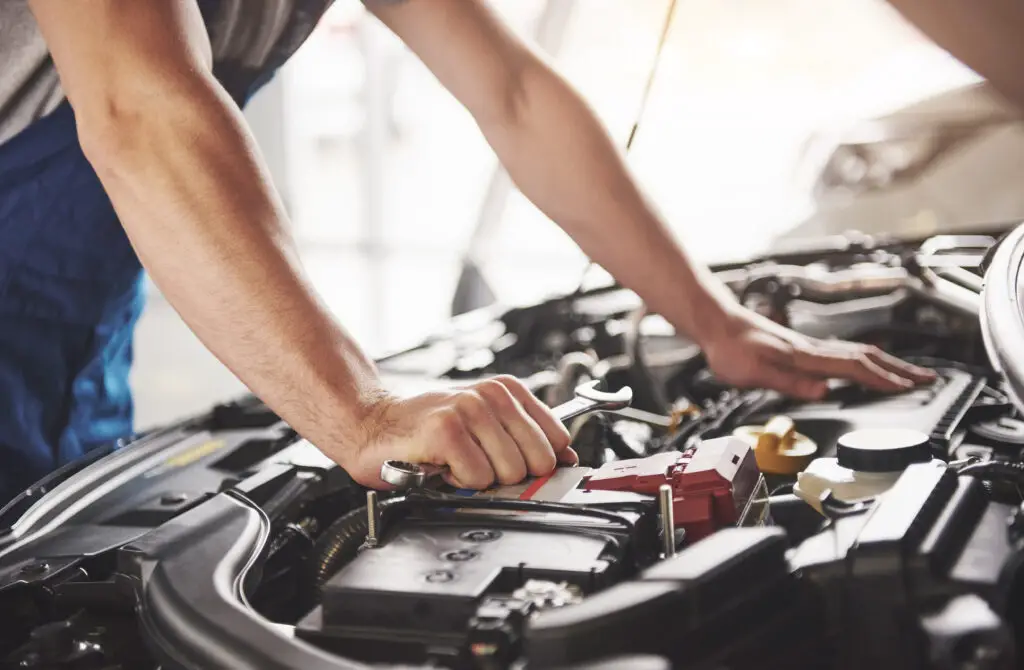A car battery is a vital component of your vehicle, providing the power necessary to start the engine and run various electrical systems. While its role may seem straightforward, the car battery performs multiple essential functions that keep your car operating smoothly. In this blog post, we’ll explore what a car battery does, how it works, and why it’s crucial for your vehicle’s performance.
1. Starts the Engine
The primary function of a car battery is to provide the electrical energy needed to start the engine. When you turn the key or press the ignition button, the battery sends a surge of electricity to the starter motor, which cranks the engine and gets it running.
How It Works:
- The battery supplies power to the starter motor.
- The starter motor turns the engine’s crankshaft.
- This action initiates the combustion process, allowing the engine to run independently.
Without a functioning battery, your car won’t start, leaving you stranded.
2. Powers Electrical Systems
Even when the engine is off, the battery powers essential electrical components, such as:
- Interior lights.
- Dashboard displays.
- Security systems and alarms.
Once the engine is running, the alternator takes over, generating electricity to power the vehicle’s systems while recharging the battery.
3. Stabilizes Voltage
A car battery acts as a voltage stabilizer, ensuring that the electrical systems receive a consistent power supply. This is especially important for sensitive components like:
- Infotainment systems.
- GPS navigation.
- Advanced driver-assistance systems (ADAS).
By maintaining a steady voltage, the battery protects these systems from damage caused by power surges or fluctuations.
4. Supports Accessories During Engine-Off Mode
When the engine is off, the battery provides power to accessories such as:
- Radio and media players.
- Headlights and taillights.
- Electric windows and seat adjustments.
This function ensures convenience and safety, even when the car isn’t running.
5. Acts as a Backup Power Source
In case of an alternator failure, the car battery serves as a temporary backup power source. It can keep your vehicle’s electrical systems running long enough for you to reach a safe location or a mechanic.
Signs of Alternator Issues:
- Dim or flickering headlights.
- Warning lights on the dashboard.
- Difficulty starting the car.

How a Car Battery Works
Car batteries are typically lead-acid batteries that use a chemical reaction to produce electricity. Here’s how they work:
- Chemical Reaction: The battery contains lead plates submerged in an electrolyte solution (a mix of water and sulfuric acid). This creates a chemical reaction that produces electrons.
- Electrical Flow: The electrons flow through the battery terminals, providing the electricity needed to power the car.
- Recharging: When the engine runs, the alternator recharges the battery by reversing the chemical reaction.
Why a Healthy Battery Matters
A healthy battery is essential for:
- Reliable engine starts.
- Proper functioning of electrical systems.
- Avoiding unexpected breakdowns.
Neglecting your battery can lead to frequent jumpstarts, poor performance, or complete failure, leaving you stranded.
Tips for Maintaining Your Car Battery
- Regular Inspections: Check the battery for corrosion, cracks, or leaks.
- Clean Terminals: Keep the terminals clean and free of debris to maintain a strong connection.
- Test Voltage: Use a multimeter to ensure the battery maintains a charge of 12.6 volts or higher.
- Avoid Deep Discharge: Don’t let the battery drain completely; recharge it promptly if it’s low.
- Protect Against Extreme Temperatures: Use insulation or park in temperature-controlled environments to prevent damage from heat or cold.
Final Thoughts
A car battery is much more than just a power source; it’s the backbone of your vehicle’s electrical system. By starting the engine, powering electrical components, stabilizing voltage, and acting as a backup, it plays a critical role in your car’s overall functionality.
Regular maintenance and timely replacements can keep your battery in top condition, ensuring a smooth and hassle-free driving experience. Have questions about your car battery or its maintenance? Reach out—we’re here to help!
Discover more from Chikwem
Subscribe to get the latest posts sent to your email.